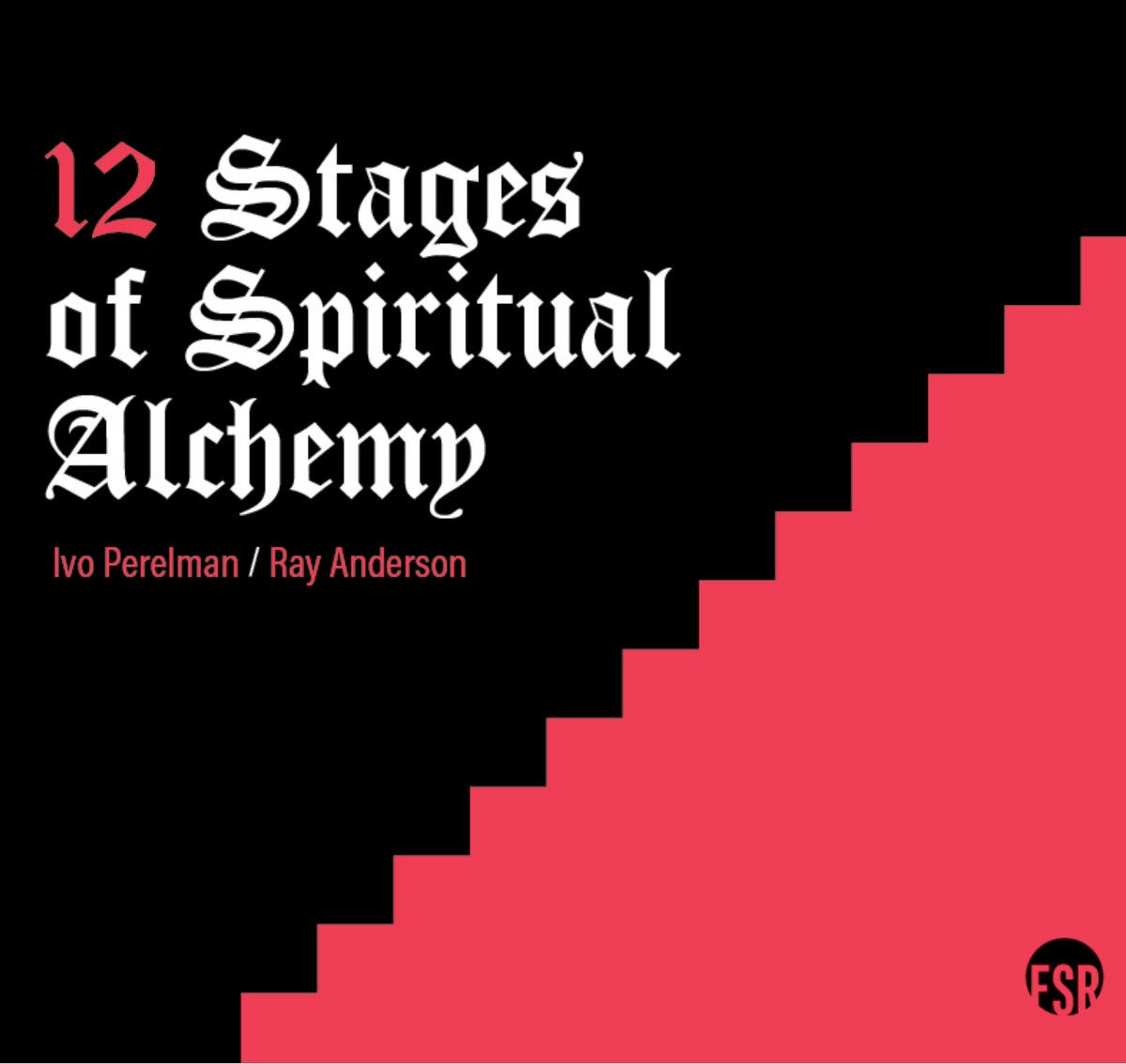The pairing of trombonist Ray Anderson and saxophone master Ivo Perelman makes for a worthy listen on this impressive recording on the Fundacja Sluchaj label. The two musicians create an array of sonic imagery, using their instruments’ full range. Perelman spends some exquisite moments in the altissimo register, pitched against Anderson’s guttural descents into the basso range and regularly using the upper register to create playful interludes. Both appear to relish exploring the mystical depths of musical interaction.
A musical experiment
The recording was made in 2022 by longtime Perelman engineer Jim Clouse at Park West Studios (Brooklyn). Fundacja Słuchaj’s edition frames twelve concise movements named for stages of alchemy (Separation, Calcination, Coagulation, etc.), resulting in 56 minutes of magical chemistry. Perelman has a long relationship with Park West/Clouse. Perelman and Anderson recorded on the 2-CD quartet ‘Molten Gold’ with Joe Morris and Reggie Nicholson, released by Fundacja Słuchaj in 2023. However, this is the first duo recording by the pair.
From the opening announcement of the trombone, this album is a musical delight, and the connection between the musicians is palpable. Across twelve tracks, Perelman’s explorative nature is tempered at times and matched by Anderson’s astounding agility on the trombone. ‘Separation’, the opening track, sees the heavy, brassy nature of the trombone outshout the grainy, lower register of Perelman’s tenor at times, then pull back, leaving the sax to sing. The track develops as an intimate conversation, from opposing phrases to the final minute where the duo extends their phrasing and forms a beautiful, harmonic close.
‘Calcination’ is edgy, sharp, and prosaic in its essence, as the trombone skilfully weaves around the sax’s melodic phrasing. The character of both players emerges in the playful nature of the final section, where Perelman casually drops a line from a nursery rhyme into the continuing improvisation of the trombone.
‘Putrefaction’ is short, harmonious in parts, and very intense, while ‘Dissolution’ is laid back, swingy in places, and a dextrous exhibition of register-switching combines with acrobatic rises and falls from both players.
‘Coagulation’ sees both instruments creating short phrases that are swapped, extended, and moulded. The passages are woven around each other, and rhythmic changes happen simultaneously yet spontaneously with that slight pause from one player, then the other, as they first lead and then follow — pure improvisational cooperation.
‘Conjunction’ begins with a funereal opening, reminiscent perhaps of a New Orleans death march, before the mood lightens and evolves into a triumphal sound procession with a flourish to finish.
‘Sublimation’ is warpy and guttural, and both players work to create something sounding like a nest of hornets, so intense is the sound. ‘Exaltation’ sees the growling, guttural sounds of the trombone pitted against Perelman’s cheekiness with his sax, swinging between lyrical melodies. As the track develops, a playfulness enters the music, staccato notes are exchanged, and a sharp, crackling melody develops between the instruments.
‘Projection’ is around nine minutes of profound exploration, with both musicians finding the extremes of their instruments’ range and introducing a variety of phrasing and technique, while ‘Multiplication’ is a short romp across octaves and registers.
‘Fermentation’ is buzzy, fever-pitched in places and features blasts from the trombone, rivulets of sound from the sax, and some beautifully tempered harmonics before ‘Cibation’, the closing track, which sees both musicians finding melodies of their own, weaving towards and away from each other in glorious disharmony, yet using notation closely related so it makes sense.
This is a wonderful recording, and Anderson’s exuberance infects the music. Paired with Perelman’s ability to switch mood and tempo and his unerring musicality, the music is at times intense and always accessible for listeners preferring improvisation or harmony. The pairing of trombone and tenor sax creates a wealth of sound possibilities, none of which pass either musician by. The result is free improvisation that fuses the timbre of both instruments and creates character and a simple but profound beauty.
